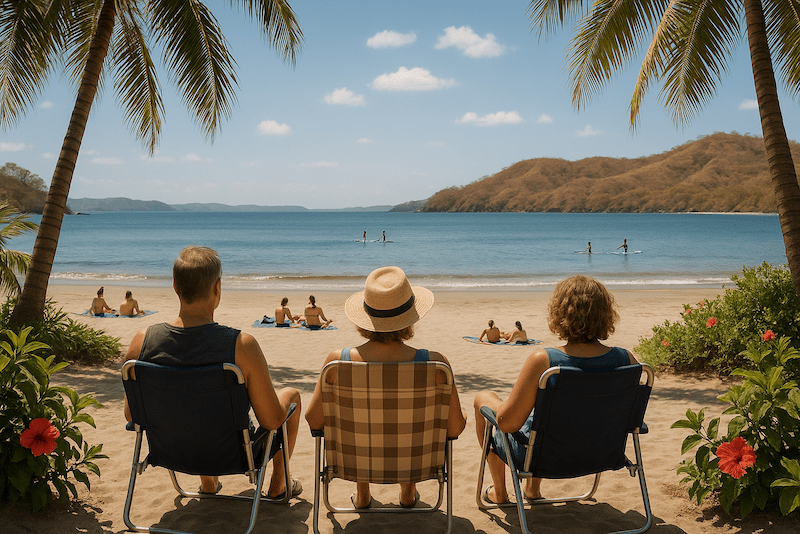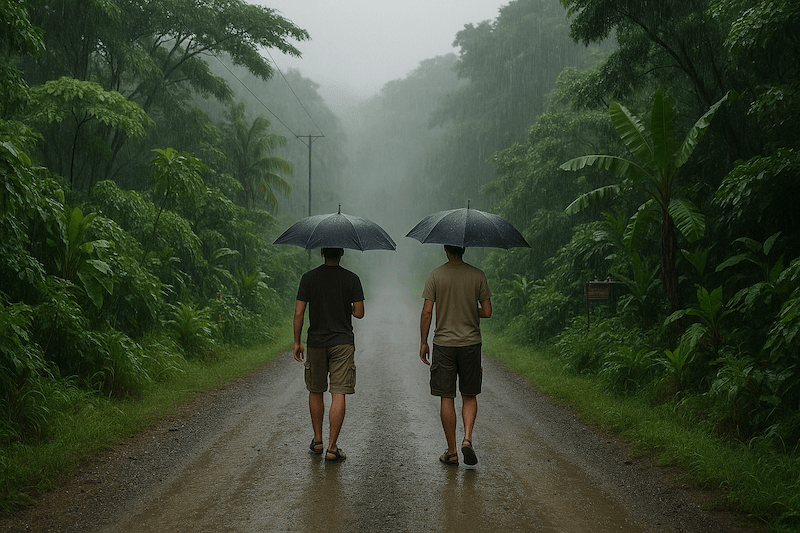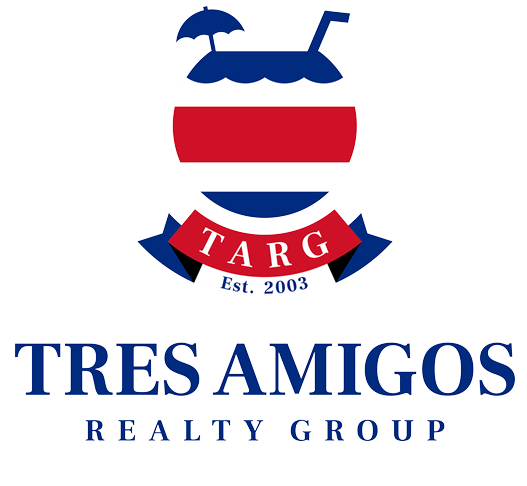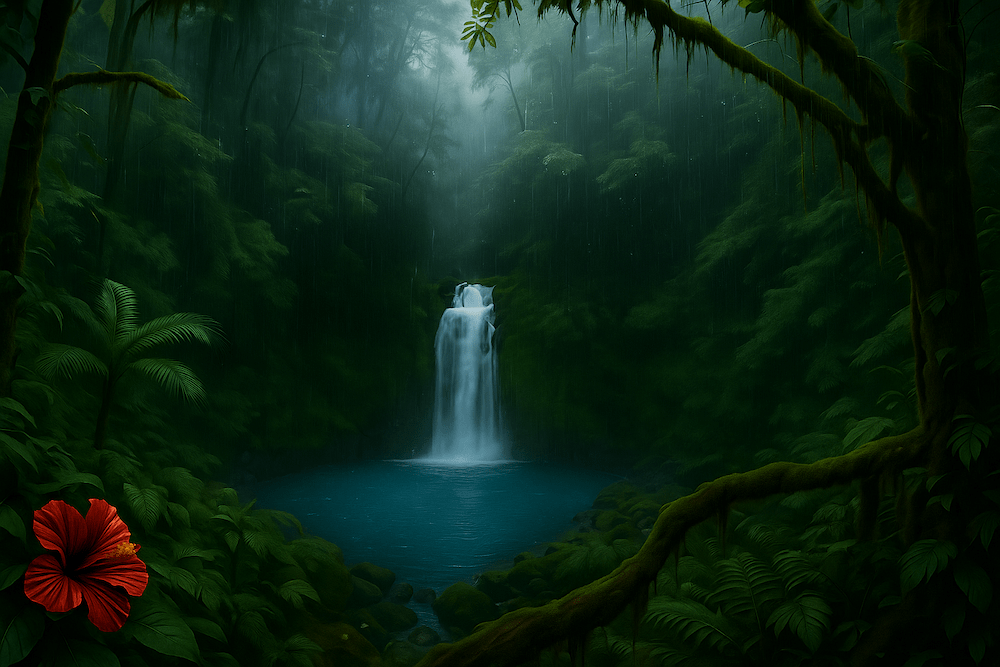What is Costa Rica Weather Like?
Ask anyone who has settled into life along the Papagayo Peninsula what first won them over, and chances are the answer won’t just be the natural beauty and lifestyle. It’s the weather. Crisp offshore breezes, months of reliable sun, and the reassuring rhythm of tropical seasons shape not only daily life but also the way real estate here holds its value. Understanding Costa Rica’s climate - especially the way it plays out in Guanacaste - helps explain why demand for property in the Papagayo region has remained strong among residents and vacationers alike.
An Overview of Costa Rica’s Climate
Costa Rica lives close to the equator, so temperatures don’t swing dramatically through the year like they do farther north. Instead of four seasons, there are really only two: dry and rainy. Both are warm, and both bring their own advantages. If you’re moving here or shopping for a home, your comfort level will depend less on temperature and more on when it will rain, when to expect a breeze and levels of humidity - factors that vary by region.
For future residents looking at the Papagayo area in Guanacaste, take note that the northwest Pacific is the country’s sun belt: long dry spells, predictable showers in the green season, and a soft ocean breeze that keeps evenings comfortable. That pleasant consistency - rather than extremes - is what supports Papagayo’s year-round lifestyle and the stability of its property market.
Tropical Climate Zones
Although Costa Rica is small, it’s famously diverse. Coastal plains, central mountain ranges, and pockets of cloud forest create a patchwork of microclimates. You can drive an hour and step from salty heat into cool mist. That variety is a dream for travelers, but it also means buyers should choose their microclimate with care. Sun is popular for retirees and homeowners - thus a bit easier to sell aproperty if required. Rainforest is beautiful but it can take a long time to sell a property. We always recommend to buy in popular expat living locations and travel just a short way to enjoy a hundred different microclimates at your leisure.
Papagayo sits in the driest quadrant of the country. Here, blue-sky stretches are the norm through the dry months, and the rainy season tends to favor sunny mornings with showers later in the day. That balance - enough moisture to keep landscapes green, not so much that it interrupts daily life - underpins why families, retirees, and investors steadily favor this corner of Guanacaste.
How Geography Shapes the Weather
The volcanic cordilleras running down the country act like a weather hinge. Moisture from the Caribbean often turn into clouds and empty out along the slopes, leaving the Pacific side - especially the far northwest - noticeably drier. Add in the seasonal push and pull of trade winds and ocean temperatures, and you get the rhythms locals plan around: beach mornings, brief afternoon showers, brilliant sunsets.
Papagayo benefits from this geography more than most. Hills to the east, and the Gulf of Papagayo itself, help moderate conditions, reducing the frequency of all-day rains that other regions see in September and October. The result is an unusually “livable” climate that keeps outdoor spaces - terraces, pools, open-air kitchens - usable most days of the year.
The Two Main Seasons
As mentioned previously, rather than spring, summer, fall, and winter, Costa Rica moves between a dry season and a rainy (or “green”) season. Locals call them verano (summer) and invierno (winter) but don’t let the word “winter” mislead you - both seasons are warm. What changes is rainfall, wind, and the look of the landscape, all of which matter when you’re choosing where - and how - you want to live.
The Dry Season (Summer / “Verano”)

When it starts and ends (December–April)
Dry season typically arrives in December and runs through April. In Papagayo, this is the long exhale - skies turn cobalt blue, hillsides golden, and the Papagayo winds bring pleasant, low-humidity days. Holiday travelers arrive, boat slips fill up, and outdoor living becomes your default setting. If you’re touring properties, this is when homes show best: clear views, bright interiors, and low ambient moisture.
From a real estate perspective, those months also illustrate demand patterns. Second-home owners escape extreme northern winters, and vacation rental owners see peak occupancy. That steady flow supports pricing and gives buyers a realistic picture of potential rental performance, particularly for homes with shaded terraces, cross-ventilation, and pools designed for breezy afternoons.
Typical conditions and travel highlights
Expect daytime highs in the high-80s to low-90s°F (around 31°C to 33°C) along the coast, with evenings cooling under the wind’s influence. Water clarity is excellent for snorkeling and boating in the Gulf of Papagayo; golf and sailing are at their easiest with minimal rain.
In Canada they say there are only two seasons: "winter" and "construction". It's similar in Costa Rica but we would say "green season" and "outside stuff". For residents, dry season is also “let's move outside” season. Living rooms spill outside, dinners happen on your open-air patio, and weekend plans are far less likely to be interrupted by showers.
The Rainy Season (Green Season / “Invierno”)

When it starts and ends (May–November)
Rains return in May and taper off by the end of November. Nationwide, September and October are the wettest months; in Papagayo, they’re tempered by geography. The first half of the season often brings “classic tropics” days: bright mornings, clouds building after lunch, showers or thunderstorms near sunset. The landscape shifts from dry wheat to emerald in a matter of weeks.
For newcomers, the green season quickly becomes a favorite. Sunrises are crisp and clear, the ocean takes on deeper blues, and wildlife steps into the foreground. If you work remotely, mornings are productive outdoors; late afternoons invite books, films, or a quick run to the gym - small rituals that make the season feel restorative rather than restrictive.
Afternoon showers vs. all-day rain
A key distinction is the difference between timed showers and true rain-outs. Much of Papagayo experiences the former: a predictable pattern that invites beach time or golf before lunch and errands in early afternoon, with a passing shower later on. All-day rains are far less common here than in wetter regions, which is why patios and pools remain in regular use.
Those rhythms shape daily life. Home designs often anticipate the late-day shift, with covered terraces, outdoor fans, and seating that pulls toward the view even as clouds roll in. Smart landscaping - native trees, permeable paths - keeps properties resilient during rainier weeks in September and October.
Why locals and expats appreciate this season
Green season brings practical advantages: cooler nights, fuller waterfalls, vibrant gardens, and quieter beaches. Surfers welcome consistent swells. Wildlife viewing peaks. Restaurants feel local again. The break in tourism heat helps long-term renters and year-round residents settle into slower, more sustainable routines.
Financially, owners with well-located homes still see solid occupancy - especially for longer stays and remote workers - thanks to the region’s balance of sun and rain. That continuity is part of why Papagayo prices have shown resilience: demand persists across seasons because the lifestyle remains comfortable across seasons.
The “Mini-Summer” in July
What it is and why it happens
Right in the middle of the rainy season, Costa Rica often enjoys a “mini-summer,” or veranillo, most commonly in July. The pattern brings a noticeable drop in rainfall, steadier breezes, and stretches of blue-sky days. It’s driven by shifts in wind and pressure that temporarily interrupt the moist flow over the Pacific side.
In Papagayo, that window can feel like a bonus dry season. Trails firm up, visibility improves for diving, and sunset sails return to the weekly calendar. Families time school breaks to it; buyers often schedule trips around the country to experience both sides of the climate in a single season.
How travelers and residents take advantage of it
Homeowners often use the mini-summer to host visiting family or friends, refresh exterior paint, or tackle short outdoor projects without weeks of delay. Resorts and marinas offer more events and evening programming. If you’re shopping for property, it’s an excellent time to test drive a home’s outdoor areas and to watch how breezes move through rooms as the day warms.
For full-time residents, the mini-summer is a reminder of why the northwest coast works so well: even the “rainy” part of the calendar includes genuine beach days. That reliability supports a great quality of life and results in steady demand for vacation rentals.
Regional Weather Differences
Costa Rica’s contrasts are part of its charm, but they also explain why Papagayo’s climate is a standout for everyday living. Speak with your agent about their experiences living in Costa Rica. How do they plan their year around the wet and dry seasons?
Pacific Coast (Guanacaste, Nicoya, Central Pacific, South Pacific)
The northwest - Guanacaste and the Papagayo area - is the sunniest slice of the Pacific. Dry season is long; green season is moderate for much of its span. Farther down the coast in Nicoya, Jaco, Dominical, Uvita and Golfito the rainfall increases, especially in the deep south where the rainforest meets the ocean. Those areas are spectacularly lush, but require a higher tolerance for frequent showers and road conditions that change with the weather.
Caribbean Coast (Limon, Puerto Viejo, Cahuita)
The Caribbean plays by different rules. Rain can arrive in any month, with clearer stretches often appearing in September and October. You should efinitely make plans to visit the Caribbean coast. It is rich in wildlife and Caribbean culture. However it tends to be very damp and hot for much of the year due to high humidity. For this reason and others, such as less developed infrastructure and elevated crime, few expats have chosen to settle on the Caribbean side of the country.
Central Valley (San José, Alajuela, Heredia, Cartago)
At elevation, the Central Valley enjoys a temperate climate. Days are more mild, evenings relatively cool, and rains are common in the afternoons. It’s a comfortable urban climate, though not the sun-drenched lifestyle that defines Papagayo’s coast. Properties exceeding $300,000 tend to sell very slowly because there are fewer buyers that can afford such properties. Demand is low because most expats are in the Central Valley for work, not investment. They are renting, not buying.
Mountains and Cloud Forests (Monteverde, Arenal, Turrialba)
These highland zones trade sunshine for mist, wind, and atmosphere. Wonderful for weekend escapes and ecotourism, they demand layers, dehumidifiers, and a willingness to live with frequent cloud cover - conditions that some love, and others prefer in small doses. Our choice is to visit these beautiful places but live in the sunshine.
Temperatures and Rainfall
Average temperatures by season
On the coasts, typical daytime highs range from the mid-80s to low-90s °F (around 31°C to 33 °C), dipping at night with breezes. At higher elevations, expect 70s by day and cooler evenings. The key is that seasonal temperature swings are modest; what you feel most is the interplay between sun, shade, wind, and moisture.
In Papagayo, homes that harness cross-ventilation and shade trees often minimize air-conditioning needs, especially outside late March and April.
Rainfall patterns by region
Annual rainfall can be under 40 inches in parts of the northwest and several times that in the southern Pacific. The practical takeaway: drainage, roof design, and materials should match the microclimate. In Papagayo, you’ll still want good gutters and graded lots, but maintenance cycles are generally lighter than in wetter zones.
For buyers, these differences translate to cost of ownership. Lower humidity means fewer battles with mold, clearer windows, and exterior finishes that age more gracefully. Over time, that can support stronger resale value - one more reason demand in the northern Guanacaste area stays constant.
How the Weather Affects Daily Life
Travel and tourism considerations
Tourism peaks in the dry season, bringing energy and events. The green season trades crowds for space and saturated color. Because Papagayo remains relatively sunny even in the wetter months, the region enjoys a more even climate rhythm than many parts of the country - good news for year-round residents and rental calendars alike.
Gardening, outdoor activities, and surfing seasons
Gardeners celebrate the first green-season rains: bougainvillea rebounds, citrus perks up, and native grasses revive. Dry season favors pruning, painting, and outdoor entertaining; green season favors planting, mulching, and waterfall days. Either way, the calendar revolves around being outside.
Surfers watch the green-season swell patterns, sailors and anglers love the clarity and calmer seas of dry months, and hikers split the difference - early-morning starts work in both seasons.
Real estate and living comfort
Climate informs architecture here: deep roof overhangs, shaded verandas, operable louvers, and materials chosen for salt and sun. Homes that are built around this region are easy to live in, and that ease is reflected in buyer demand. A property that doubles its usable space outdoors is, functionally, a larger home.
Because Papagayo offers long dry spells and gentler rains, maintenance is manageable and lifestyle consistent. Those qualities underpin stable values: the market isn’t just selling views - it’s selling dependable, day-to-day comfort in a coastal climate that works.
Tips for Adapting to Costa Rica Weather
Packing essentials
Light clothing, breathable fabrics, a wide-brim hat, polarized sunglasses, and sunscreen cover most days. In green season, add a compact umbrella, quick-dry layers, and footwear with grip for damp trails or marina docks.
For the home, consider dehumidifiers for interior closets, shade sails over western terraces, and in some cases insect screens that let evening breezes flow. Small choices add up to a more effortless life.
When to visit depending on your goals (beach vs. nature vs. city life)
If your dream is sun-drenched beach time and boat days, December through April is your stretch. If you’re after dramatic greens, fuller rivers, and lively surf, May through August delivers - with the July mini-summer often offering bonus blue-sky weeks.
Relocation scouts should try both seasons. Tour homes in March to feel the breeze pattern, then return in late July or early August to experience the mini-summer and the softer light of green season. It’s the quickest path to confidence in your choice.
Health and lifestyle adjustments
Stay hydrated during the hotter days. We recommend early starts when it's cool, shaded afternoons and evening walks. Most newcomers find that the rhythm - a little earlier, a little slower in the afternoon - arrives naturally within weeks.
Design your days around the forecast: outdoor tasks in the morning, errands before three, sunset plans with a compact umbrella (in the green season) in case of a passing shower. In Papagayo, that simple playbook works most days of the year.
Final Thoughts
Costa Rica’s climate isn’t background scenery; it’s part of daily life. In the Papagayo region, that stage is unusually accommodating - long, light dry months; a green season that refreshes more than it restricts; and a mid-year mini-summer that keeps the calendar honest.
For future residents and buyers, that reliability is the quiet engine behind stable property demand and resilient pricing. You’re not just choosing an address - you’re choosing a rhythm. In Papagayo, the rhythm is easy to enjoy for many years to come.







